Table of Contents
When that familiar chill sets in, or maybe you're just feeling a bit under the weather, nothing quite hits the spot like a steaming bowl of chicken noodle soup. It’s the culinary equivalent of a warm hug, a classic comfort food that transcends generations. But have you ever thought about swapping out the usual chicken broth for something a little different, maybe something that adds a subtle layer of complexity without sacrificing that essential cozy feeling? That’s where our focus today lies: a truly satisfying chicken noodle soup recipe vegetable broth style.
Why Choose Vegetable Broth for Your Chicken Noodle Soup Recipe?
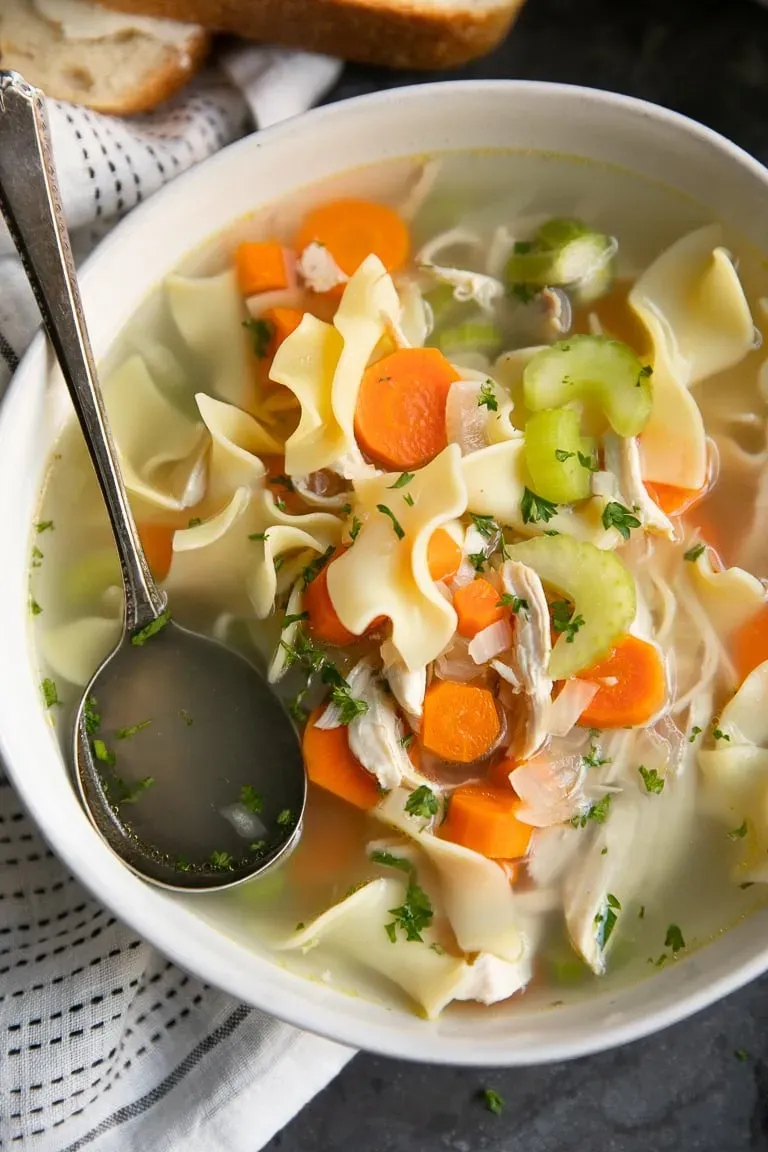
Why Choose Vegetable Broth for Your Chicken Noodle Soup Recipe?
so you're making chicken noodle soup, the classic comfort food. Why mess with a good thing by using vegetable broth instead of chicken broth? Fair question. The standard chicken broth gives you that pure chicken flavor, sure. But using vegetable broth? It adds a whole different dimension. It brings a subtle sweetness and a layer of complex earthy notes that you just don't get from chicken bones alone. Think of it as giving your soup a little secret handshake, a flavor boost that makes people go, "Hmm, this is really good, what's different?" It lightens the overall profile slightly, making the chicken and noodles pop even more, and frankly, it feels a bit fresher. Plus, if you have vegetarian friends who *really* miss chicken noodle soup, this gets them halfway there, at least in spirit and aroma.
- Adds subtle sweetness
- Introduces earthy undertones
- Provides a lighter base
- Makes chicken and noodles stand out
- Offers a fresh twist on a classic
Gathering Your Ingredients: Essential for Chicken Noodle Soup with Vegetable Broth

Gathering Your Ingredients: Essential for Chicken Noodle Soup with Vegetable Broth
Picking the Perfect Chicken and Veggies
let's talk groceries. You can't make great soup without decent stuff to put in it. For the chicken, you've got options. A rotisserie chicken is your weeknight warrior – already cooked, easy to shred, saves you a step. Just make sure it's plain or lightly seasoned, not some weird BBQ flavor bomb. If you're feeling ambitious, bone-in chicken breasts or thighs simmered in the broth add even more depth, but yeah, that takes longer. As for the veggies, we're talking the holy trinity: carrots, celery, and onion. Chop them relatively evenly so they cook at the same rate. Don't skimp on freshness here; sad, floppy celery makes sad soup.
Choosing Your Broth and Noodles Wisely
Now for the star of this particular show: the vegetable broth. This isn't the time to grab the cheapest box on the shelf and hope for the best. Look for a good quality broth with a robust flavor. Some can be a little watery or overly sweet. Read labels; you want vegetable goodness, not just salt and sugar. Better Than Bouillon vegetable base is a solid choice if you prefer concentrate. For the noodles, classic egg noodles are the standard for a reason – they're tender and soak up flavor beautifully. Go for medium or wide egg noodles; the skinny ones can turn to mush too quickly. Avoid anything tiny like alphabet pasta unless you're specifically aiming for soup that spells things.
Essential Ingredient Checklist
- Cooked chicken (rotisserie or home-cooked)
- Good quality vegetable broth
- Carrots
- Celery
- Yellow or white onion
- Medium or wide egg noodles
- Butter or olive oil
- Garlic
- Fresh or dried herbs (like thyme, rosemary, parsley)
- Salt and black pepper
Adding Aromatics and Flavor Boosters
Beyond the main players, a few extras take this chicken noodle soup recipe vegetable broth from good to "please give me another bowl." Garlic is non-negotiable, obviously. Sauté it with your veggies for a fragrant base. Fresh herbs, like a sprig of thyme or rosemary tied together with kitchen twine (so you can easily pull it out later), infuse the broth with incredible aroma. A bay leaf is another classic booster. Don't forget salt and pepper – season as you go and taste frequently. A little pinch of dried parsley stirred in at the end adds a pop of color and fresh flavor. Sometimes, a tiny splash of lemon juice or apple cider vinegar right before serving brightens everything up unexpectedly.
Crafting the Comfort: StepbyStep Chicken Noodle Soup Recipe Vegetable Broth
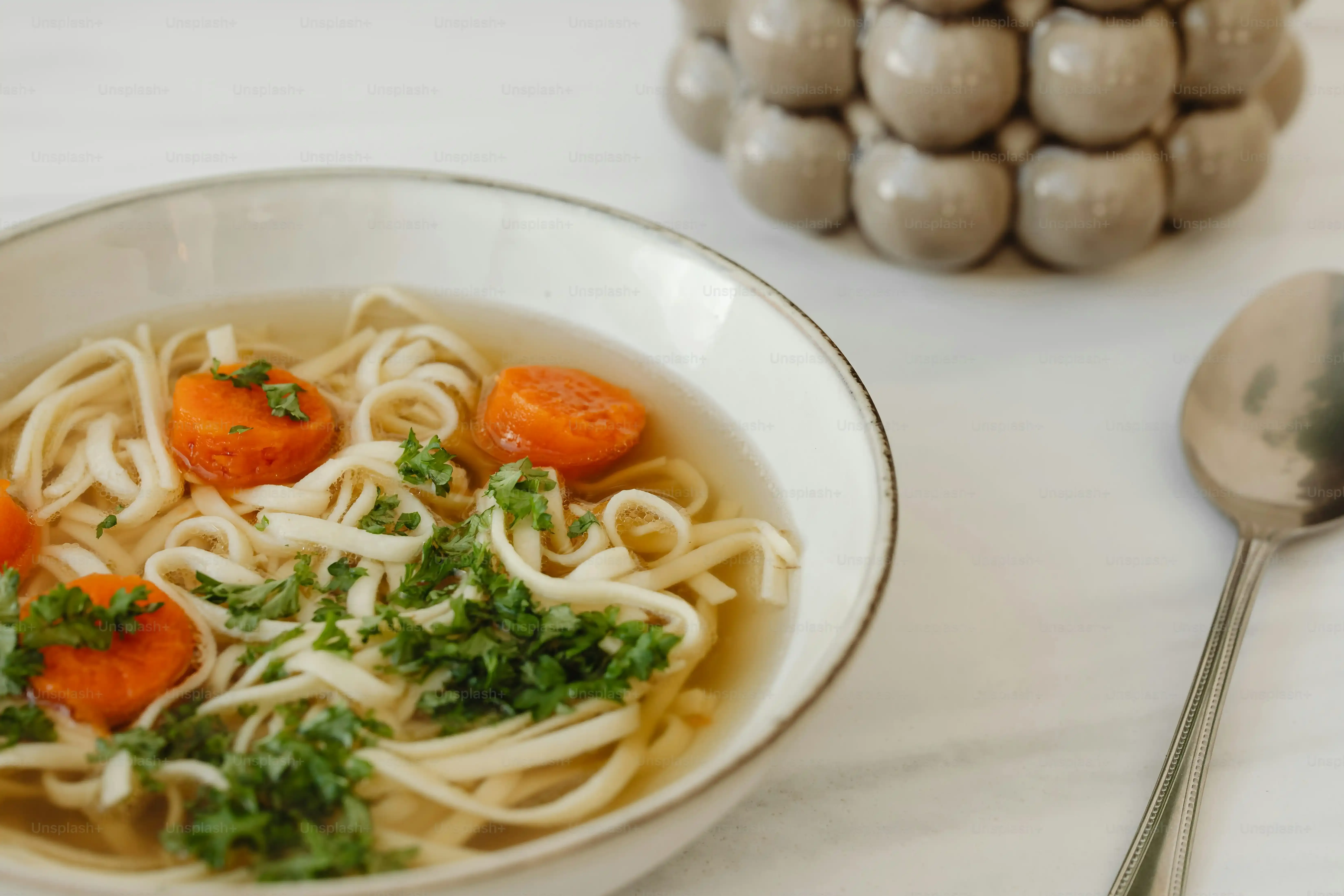
Crafting the Comfort: StepbyStep Chicken Noodle Soup Recipe Vegetable Broth
Building the Flavor Base
Alright, you've got your ingredients lined up. Time to get cooking. Grab a good-sized pot or Dutch oven – something that can handle the volume. Heat up a bit of butter or olive oil over medium heat. Toss in your chopped onions, carrots, and celery. This is your mirepoix, the classic flavor foundation for so many soups and stews. Let them cook, stirring occasionally, until they start to soften but aren't browned, maybe 5-7 minutes. You're coaxing out their sweetness and aroma. Don't rush this part; it's crucial for depth. Now, mince your garlic and add it to the pot. Cook for just another minute until you can smell it – that's the signal. Don't let it burn, or it'll turn bitter, and nobody wants bitter comfort soup.
Bringing It All Together with Vegetable Broth
Once those veggies are tender and fragrant, pour in your good quality vegetable broth. This is where the magic of our chicken noodle soup recipe vegetable broth truly begins. Add any whole herbs you're using, like that tied-up bundle of thyme. If you're using bone-in chicken, now's the time to add it too; it will cook in the broth and add extra richness. If you're using pre-cooked chicken, hold off on adding it just yet – it only needs to heat through. Bring the broth to a gentle simmer. You don't want a rolling boil; that can break down the noodles too much later. Let it simmer for about 15-20 minutes if you added raw chicken, or just 10 minutes to let the flavors meld if using pre-cooked.
Simmering Stages Checklist:
- Sauté mirepoix until tender (5-7 mins)
- Add garlic, cook until fragrant (1 min)
- Pour in vegetable broth
- Add raw chicken (if using) and whole herbs
- Bring to a gentle simmer
- Simmer for 15-20 mins (with raw chicken) or 10 mins (pre-cooked)
Tips and Tricks for a Standout Chicken Noodle Soup
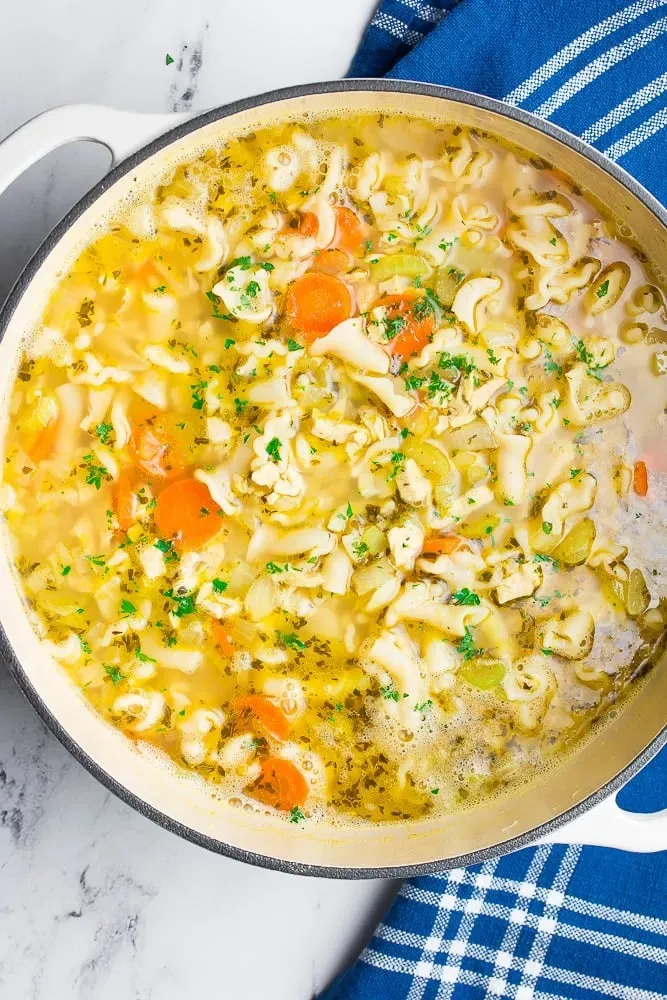
Tips and Tricks for a Standout Chicken Noodle Soup
Don't Be Shy with Seasoning (But Taste First)
so you’ve got the base simmering, smelling pretty darn good thanks to those veggies and herbs. This is the point where you can make or break your chicken noodle soup. Salt is your best friend here, but it's also a frenemy. You need enough to make the flavors pop, but too much and you've ruined it. Start with a decent pinch, stir, and taste. Wait a minute or two, then taste again. Broths can be tricky because as they simmer, the liquid reduces, concentrating the saltiness. If you add your cooked chicken now, taste again, because the chicken might be seasoned too. Keep adjusting until it tastes *right*. It should taste savory and comforting, not like you just gargled with ocean water. A little black pepper adds a nice bite, too.
Mastering the Noodle Timing
Adding the noodles seems simple, right? Just dump them in. Wrong. This is a rookie mistake that leads to mushy, sad noodles. You want your noodles tender, but still with a little chew, not disintegrating into starchy oblivion. Egg noodles cook fast, usually in 8-10 minutes. Check the package directions, but start tasting them a couple of minutes before the suggested time. Add the noodles *only* when you’re close to serving. If you add them too early, or if you plan on having leftovers, they will soak up all the broth and turn into a giant noodle-broth sponge in the fridge. Nobody wants soup you can eat with a fork like pasta.
- Season gradually and taste often.
- Add noodles only when ready to serve.
- Check noodle package for cooking time.
- Undercook noodles slightly if planning for leftovers.
- Don't boil the soup aggressively once noodles are in.
Beyond the Basics: Variations on Your Chicken Noodle Soup Recipe Vegetable Broth
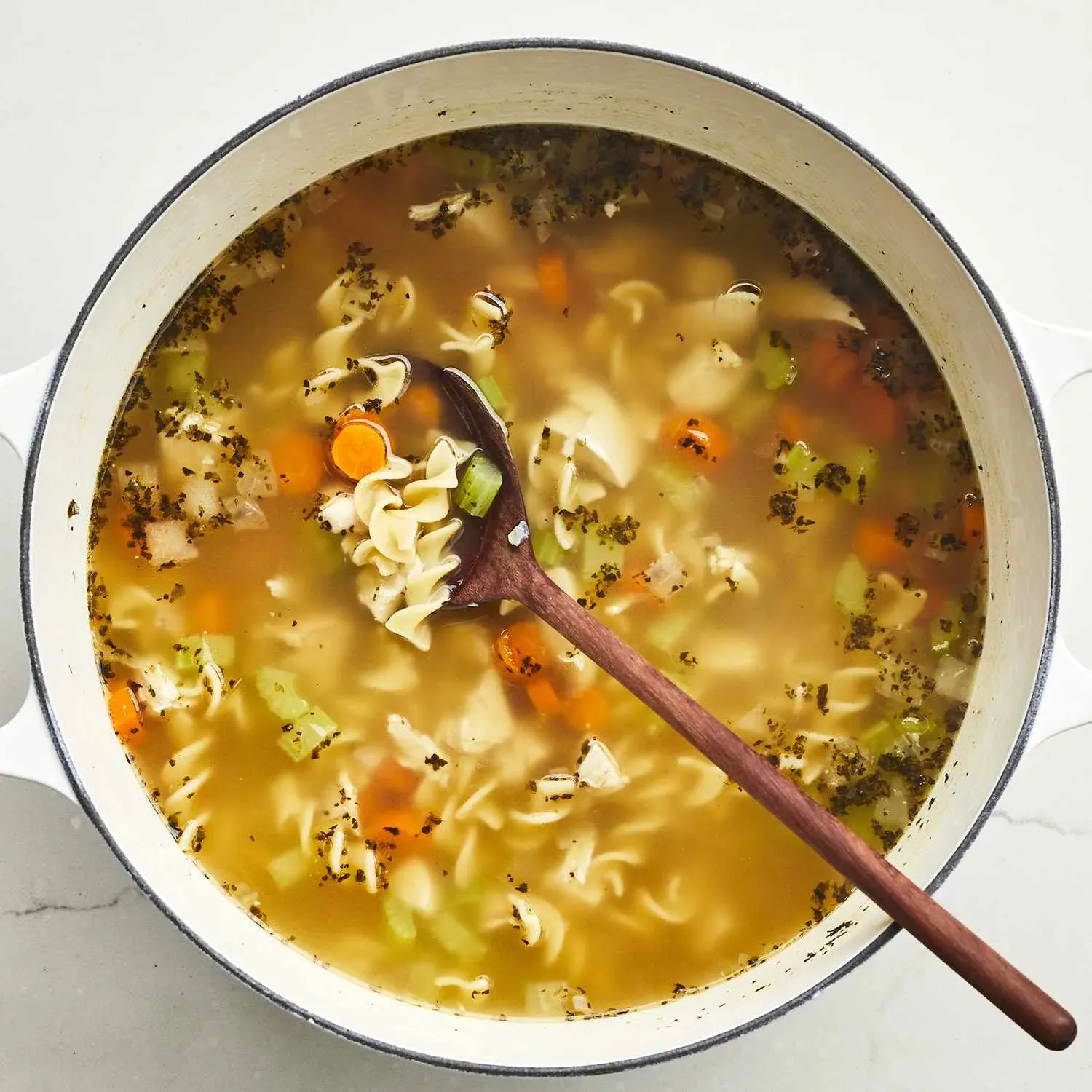
Beyond the Basics: Variations on Your Chicken Noodle Soup Recipe Vegetable Broth
Adding More Veggie Power and Color
so you've mastered the basic chicken noodle soup recipe vegetable broth. Feeling confident? Good. Let's talk variations. The simplest way to switch things up is by adding more vegetables. Carrots, celery, and onion are standard, but why stop there? Toss in some frozen peas or corn during the last few minutes of cooking for a pop of sweetness and color. Thinly sliced zucchini or yellow squash can go in about 10 minutes before serving. For a bit of green goodness and a slight peppery note, stir in some chopped fresh spinach or kale right at the very end; the heat of the soup will wilt them beautifully. It’s an easy way to boost nutrients and make the soup look even more inviting.
Spicing Things Up or Changing the Flavor Profile
Who says chicken noodle soup has to be strictly traditional? Using vegetable broth gives you a neutral canvas to play with flavors. Want a little kick? Add a pinch of red pepper flakes when you sauté the garlic. A dash of turmeric can lend a warm, earthy color and flavor, plus some potential health benefits (allegedly, I'm not a doctor). For a slightly different vibe, try adding a small amount of grated fresh ginger and a splash of soy sauce towards the end – suddenly you're flirting with an Asian-inspired broth. A little bit of smoked paprika can add a subtle smoky depth. Don't be afraid to experiment; it's your soup.
- Add red pepper flakes for heat.
- Introduce turmeric for color and earthiness.
- Try ginger and soy sauce for an Asian twist.
- Include smoked paprika for depth.
- Experiment with different dried herbs like dill or marjoram.
Exploring Different Noodles and Other Add-ins
Egg noodles are classic, yes, but they aren't the only game in town for your chicken noodle soup recipe vegetable broth. Consider using small pasta shapes like ditalini, orzo, or even broken spaghetti. Just adjust the cooking time based on the package directions. For something heartier, a handful of cooked rice or small potatoes (cut into cubes) can turn it into more of a stew-like soup. Want creaminess without dairy? Stir in a tablespoon or two of white beans or cannellini beans that you've mashed slightly – they'll thicken the broth and add protein. A sprinkle of grated Parmesan cheese on top before serving? Absolutely. It adds a salty, savory finish that complements the vegetable broth beautifully.
Quick Fixes: Troubleshooting Common Chicken Noodle Soup Issues

Quick Fixes: Troubleshooting Common Chicken Noodle Soup Issues
When Your Soup Tastes Like Sad Water
so you've followed the steps for your chicken noodle soup recipe vegetable broth, you've got the chicken and veggies in there, but you taste it and... nothing. It's bland. This happens. It's rarely because the recipe is bad; it's usually because you were too timid with the seasoning. Vegetable broth, while adding complexity, isn't inherently as rich as chicken broth right out of the box. Your first move? Salt. Add a quarter teaspoon, stir, wait a minute, and taste again. Keep going until the flavors wake up. If salt alone isn't cutting it, consider a splash of soy sauce or a tiny bit of fish sauce (seriously, it adds umami without tasting fishy). A squeeze of lemon juice at the end can also brighten everything up dramatically. Don't just stare at the pot hoping it magically fixes itself; grab the salt shaker.
Avoiding the Dreaded Noodle Mush
Ah, the mushy noodle problem. A tragedy in a bowl. This almost always happens because the noodles went in too early or the soup was boiling too vigorously after they were added. Remember that bit about adding noodles right before serving? That's your primary defense. If you *must* add them earlier for some reason (maybe you're serving a crowd all at once), undercook them slightly – maybe by 1-2 minutes less than the package suggests. They'll continue to cook in the hot broth even off the heat. If you're planning on leftovers, it's almost always better to cook noodles separately and add them to individual bowls just before serving. Trying to reheat soup with noodles cooked hours ago is a one-way ticket to starch city.
- Add noodles right before serving.
- Undercook noodles slightly if storing leftovers.
- Cook noodles separately for best leftover results.
- Avoid aggressive boiling once noodles are in.
- Use medium or wide egg noodles for better structure.
Dealing with Broth That's Too Thin or Too Thick
Sometimes your chicken noodle soup recipe vegetable broth ends up looking more like flavored water or, conversely, a gloopy mess. If it's too thin, the easiest fix is to let it simmer gently, uncovered, for a bit longer. This allows some of the liquid to evaporate, concentrating the flavor and slightly thickening the broth. If you're in a hurry, you can make a quick slurry of a tablespoon of cornstarch mixed with two tablespoons of cold water, stir it into the simmering soup, and cook for a minute or two until it thickens. If it's too thick (maybe from overcooked noodles releasing starch, or too much reduction), just add more vegetable broth or hot water a little at a time until it reaches your desired consistency. Taste and re-season if you add liquid.
Serving Suggestions and Storing Your Chicken Noodle Soup
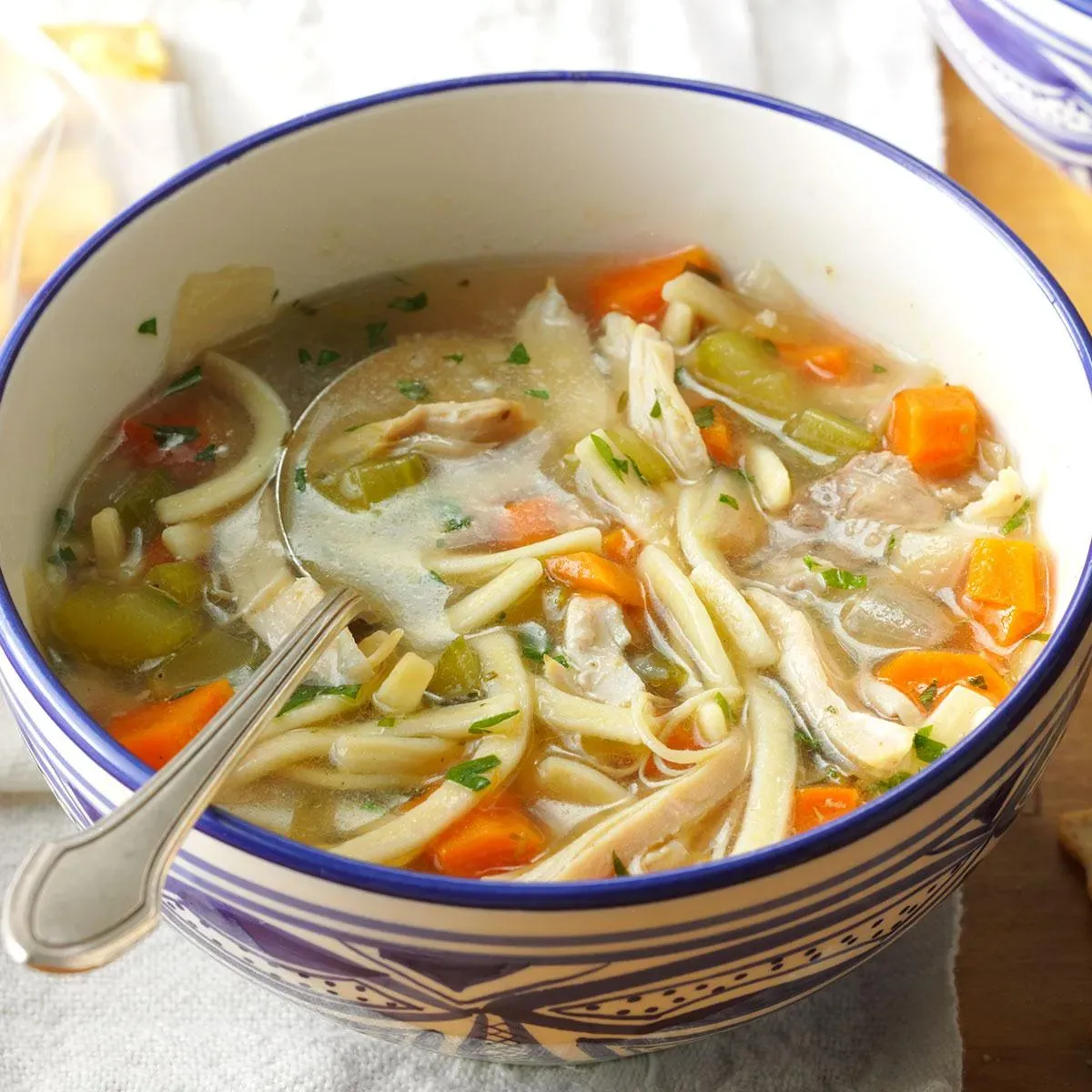
Serving Suggestions and Storing Your Chicken Noodle Soup
So, you've got a pot of delicious chicken noodle soup recipe vegetable broth ready. How do you serve it, and more importantly, how do you keep the leftovers from turning into a sad, mushy tragedy? Serving is easy: ladle it into bowls, maybe top with a sprinkle of fresh parsley or a crack of black pepper if you're feeling fancy. A crusty piece of bread for dipping is never a bad idea. Now, for the leftovers. This is where the noodle timing really pays off. If you added the noodles just before serving, your leftover broth should still be relatively clear. Store the soup in airtight containers in the refrigerator for up to 3-4 days. The noodles *will* continue to absorb liquid, even in the fridge, so expect it to thicken slightly. If you cooked the noodles separately for leftovers, store the broth and noodles in separate containers and combine them when reheating.
- Store soup in airtight containers.
- Refrigerate for up to 3-4 days.
- Expect noodles to absorb some broth.
- Store noodles and broth separately for best leftover quality.
- Reheat gently on the stovetop or in the microwave.
FAQs About Chicken Noodle Soup Recipe Vegetable Broth
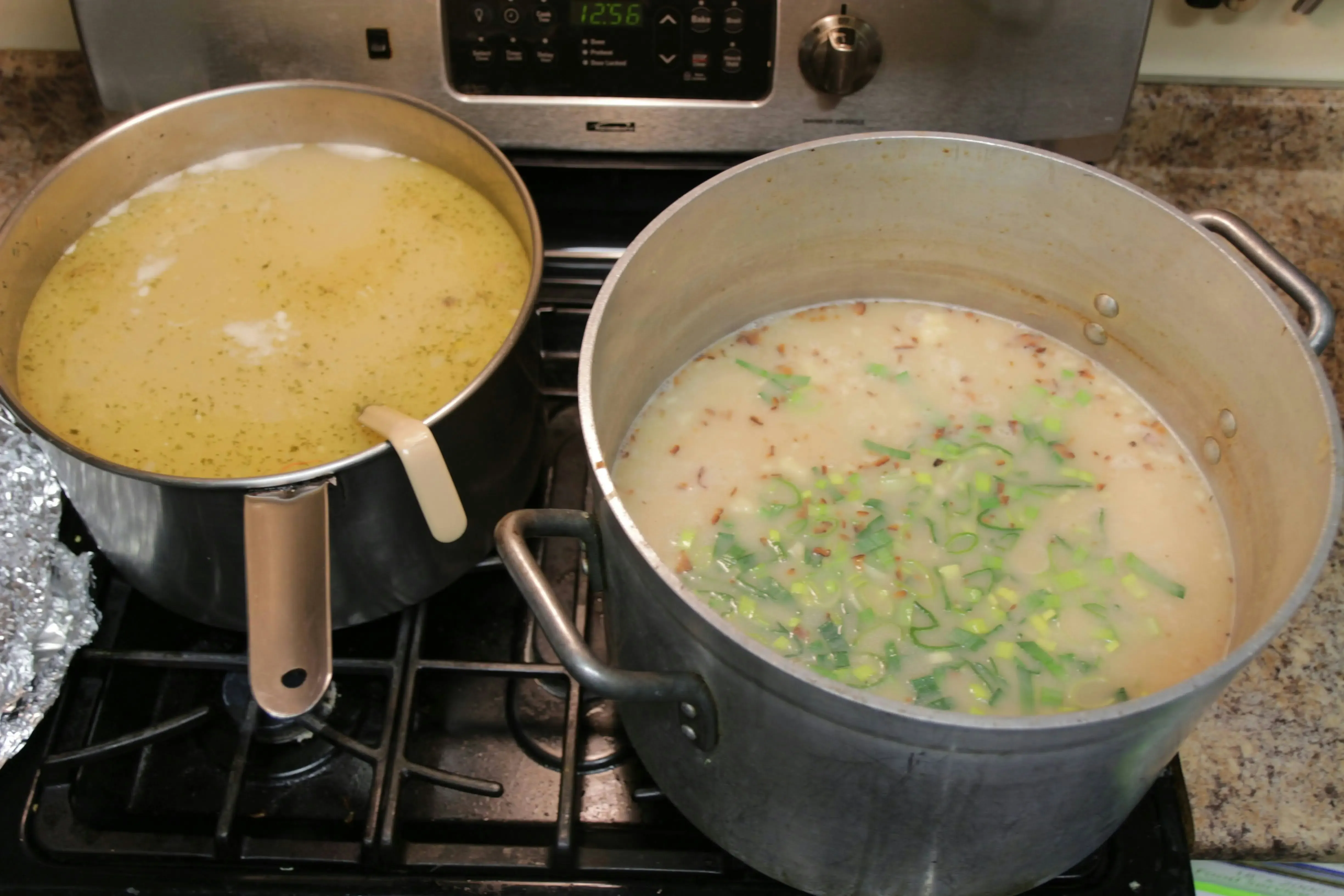
FAQs About Chicken Noodle Soup Recipe Vegetable Broth
Can I Use Just Any Vegetable Broth for My Chicken Noodle Soup?
Look, technically, yes, you *can* use just any box of vegetable broth you find. But should you? Probably not, if you want a soup that tastes like more than just hot salty water. The quality of your broth is a huge deal in this chicken noodle soup recipe vegetable broth style. Some cheap broths are basically colored water with a ton of sodium and maybe a hint of onion powder. They lack the depth and actual vegetable flavor you need to stand up to the chicken and noodles. Spend a little extra on a reputable brand or, better yet, make your own if you have the time. A good broth has a complex, savory base that makes everything else in the soup shine. A bad one just... exists.
What If I Don't Have Fresh Herbs? Can I Use Dried?
Absolutely. While fresh herbs definitely bring a brighter, more vibrant flavor, dried herbs are perfectly fine and often more convenient. The general rule of thumb is to use about one-third the amount of dried herbs compared to fresh, as dried are more concentrated. If the recipe calls for a tablespoon of fresh thyme, use a teaspoon of dried thyme. Add dried herbs earlier in the cooking process, like when you add the broth, so they have time to rehydrate and release their flavor. Fresh herbs, like parsley, are great stirred in at the very end or used as a garnish for that pop of color and fresh finish.
- Use 1/3 amount of dried herbs compared to fresh.
- Add dried herbs early in the simmer.
- Save fresh herbs for the end or garnish.
- Dried herbs like thyme, rosemary, and oregano work well.
Can I Make This Chicken Noodle Soup Recipe Fully Vegetarian or Vegan?
You're halfway there with the vegetable broth! To make this chicken noodle soup recipe vegetable broth friendly for vegetarians, simply omit the chicken. You can add extra vegetables like mushrooms (they add a meaty texture and umami), chickpeas, or white beans for protein. For a fully vegan version, you'll also need to swap the egg noodles for a vegan pasta alternative (many dry pastas are vegan, just check the ingredients) and use olive oil instead of butter for sautéing the vegetables. It won't be *chicken* noodle soup anymore, obviously, but it will be a damn good, comforting vegetable noodle soup that uses the same flavorful base.
Wrapping Up Your Comfort Bowl
So there you have it. Taking a classic like chicken noodle soup and giving it a slight twist with vegetable broth isn't exactly rocket science, but it does change the game a little. You end up with a soup that's still undeniably comforting, still the go-to when you're feeling rough or just want something warm, but with a cleaner, perhaps slightly more nuanced flavor profile than its all-chicken-broth cousin. It's not a revolutionary act, just a practical way to build flavor using what you've got or what you prefer. Give it a shot next time the craving hits. Worst case, you made soup. Not a bad outcome in our book.
